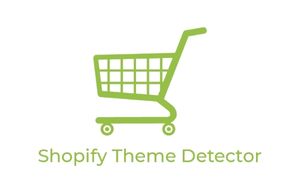Or go to our Shopify Theme Detector directly
How to Add a Tag on Shopify
Last modified: April 4, 2024

Adding tags to products is a great option for organizing your shop’s product. It allows you and customers to find products faster and the more products you have the more time you can save. Tags also allow for additional features on your website to become more useful. For instance, you can have better search, filtering and other features that make your website convert more traffic into sales.
So, here are the instructions on how to add tags to your products. You can read our other guide on how to delete tags here.
| # | Name | Image | |
|---|---|---|---|
| 1 |

|
Auto Tags ‑ Customer & Order
|
|
| 2 |

|
TagRobot: Customers + Orders
|
|
| 3 |

|
Auto Tags Orders & Customers
|
|
| 4 |

|
Customer Tags and Segments
|
|
| 5 |

|
Easy Tagging
|
|
| 6 |

|
Order Automator
|
|
| 7 |

|
Auto Tags Customer & Order
|
|
| 8 |

|
Order Tagger ‑ Auto Tags
|
|
| 9 |

|
Auto Tags ‑ All in one tagging
|
|
| 10 |

|
Ordersify: Automation Tags
|
|
|
Show More
|
|||
Step 1 – Login
Login to your website using your Shopify user credentials.
Step 2 – Products
Go to your ‘Online Store’ tab and then ‘Products’ page. Then find the product you would like to add a tag to. Open this product up.
Step 3 – Tags
Find the ‘Tags’ section on the page. Then you can enter the tag text as you would like within the text box. Or you can choose from existing tags on your products. To view the list of all the tags available, click on the ‘View All Tags’ button. If you’re adding a new tag for your website, then it will automatically be saved for future use.
Step 4 – Save
Once you’ve completed the tagging process, you can save the product.
Tagging Essentials
To ensure that you’re getting the most out of your product tags, be sure to follow some simple rules.
Keep tags short – Tags should be one/two words at most each. For instance, having a tag that reads ‘Great for Summer Weather’ is too long. It will reduce the chances that it will be found and will look messy. However, using the tag ‘Summer’ would be much better.
Use numerous tags – Don’t forget that you can use numerous tags per product. Numerous tags allow you to assign similar tags to a group of product but have small differences to each of them to allow customers who are being specific to find the exact product they want, but others to find a range of potential products.
Use specific and general tags – Don’t worry about being specific and general at the same time. General tags allow customers who aren’t sure of the product they’re looking for, while specific tags are great for customers who know exactly what they want. Using a mixture of tags for each product allows you to build for both audiences.
Check spelling – incorrectly spelt tags are a nightmare for customers. They’ll never find the products they’re looking for and you will lose revenues. Therefore, be sure to check the spelling of every single product tag you use.
Review tags – Always review the tags that are being used on your products. You might realise at some point that a tag needs to be added, or removed. Reviewing is the key to keeping your store moving and progressing well.
Enhancing Product Tagging on Shopify
Strategic Tagging for Improved Search and Organization
Effective tagging in Shopify enhances product discovery. Use specific and general tags to cater to different customer needs, improving searchability and organization.
This approach helps customers find exactly what they’re looking for, quickly and efficiently.
Automating Tagging for Efficiency
Automate tagging to manage large inventories efficiently. Tools like MESA offer templates for auto-tagging, saving time and reducing errors.
Automation ensures consistency in tagging across your product range, enhancing the overall user experience.
Tagging Best Practices
Adopt best practices like concise tags, using multiple tags per product, and regular review of tags to ensure relevance and accuracy.
Consistently applying these practices will keep your store’s tagging system effective and up-to-date.
Adding Tags Efficiently on Shopify
Organizing Data with Tags
Tags help in organizing store data, making management of products, orders, and customers more efficient and error-free.
Proper organization leads to smoother operations and better decision-making based on accurate data.
Improving Customer Segmentation and Marketing
Use customer tags for effective segmentation, enabling targeted marketing campaigns and personalized communication.
This targeted approach can significantly increase engagement and conversion rates.
Enhancing SEO and Customer Experience
Strategically use product tags to improve SEO and customer experience, making your store more accessible and user-friendly.
Well-planned tags can boost your store’s visibility in search engines, attracting more traffic.
Conclusion: How to Add a Tag on Shopify
When it comes to tags, they’re essential for a lot of apps, including when you need to add age restrictions to specific content or sell age-restricted items on Shopify. For instance, this search app relies on product tags to help it find products for your customers.
By using tags correctly, you can enhance the shopping experience for age-appropriate audiences, ensuring that they don’t encounter content or products that are unsuitable for their age group.
Additionally, tags can facilitate advanced customizations on Shopify, enabling you to tailor the platform’s functionality to meet your specific business needs. Therefore, utilizing tags in the correct way allows you to give customers a better shopping experience. This will increase conversions, order values, revenues and profit.
-
Can I bulk add tags to multiple products in Shopify?
Yes, you can bulk add tags in Shopify using the bulk editor feature. This allows for efficient tagging of multiple products at once and streamlines tagging for large inventories.
-
Is it possible to automatically tag products based on their attributes in Shopify?
Shopify itself doesn’t offer automatic tagging based on attributes, but third-party apps can automate this process. These apps use product attributes to generate and apply tags automatically.
-
Can I use tags to filter orders in Shopify?
Yes, tags can be applied to orders in Shopify, allowing for efficient filtering and management. This helps in streamlining order processing and fulfillment.




 PageFly Landing Page Builder
PageFly Landing Page Builder  Shopify
Shopify  SEMrush
SEMrush  Website Maintenance
Website Maintenance  UpPromote
UpPromote